Messina sits almost at the northeastern tip of Sicily, just across the strait from Reggio Calabria, the southernmost city in mainland Italy.
Despite its prime location, Messina is one of the less frequently visited places in Sicily, and it’s often overlooked in favor of other, more famous cities.
Sadly, Messina has a long history of devastating events, especially in the 20th century.
After a massive earthquake in 1908 destroyed a great part of Reggio Calabria and Messina, bombardments during World War II damaged the city even further, adding insult to injury.
Though it was mostly reconstructed after this series of disasters, Messina still has many abandoned buildings, which stand a sort of monument to this history of devastation and the slow process of rebuilding.
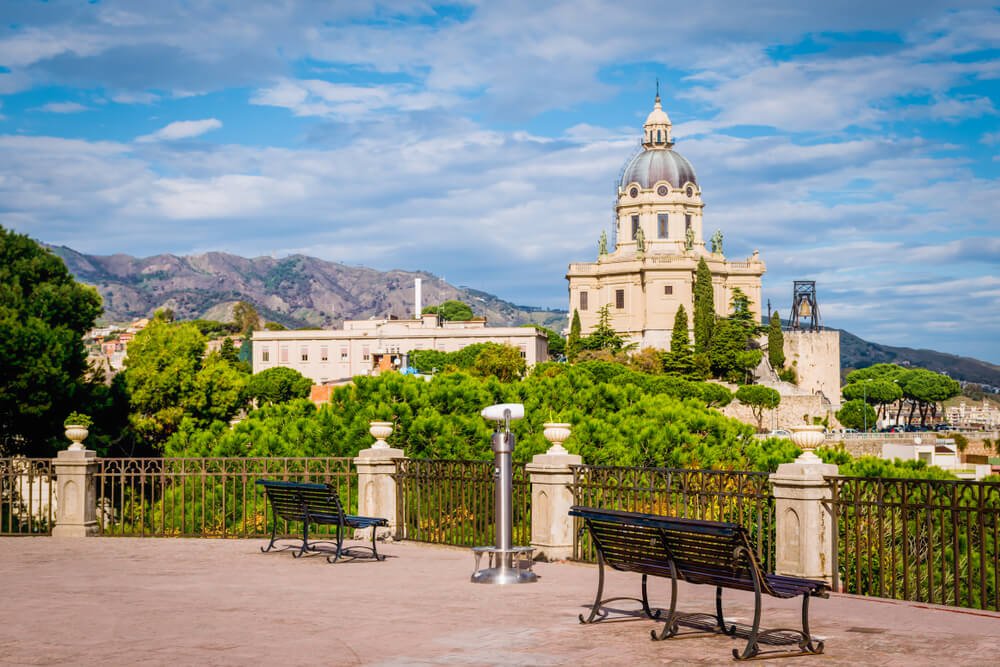
I stopped off in Messina during one of my trips to Sicily, since I was crossing the strait from Reggio Calabria.
While yes, it may lack some of the charm of small seaside towns like Taormina or Siracusa, I can tell you that it’s still a lovely city worth a visit.
Without any further ado, here’s a short guide of things to do in Messina, one of Sicily’s most underrated cities.
Tips for Visiting Messina
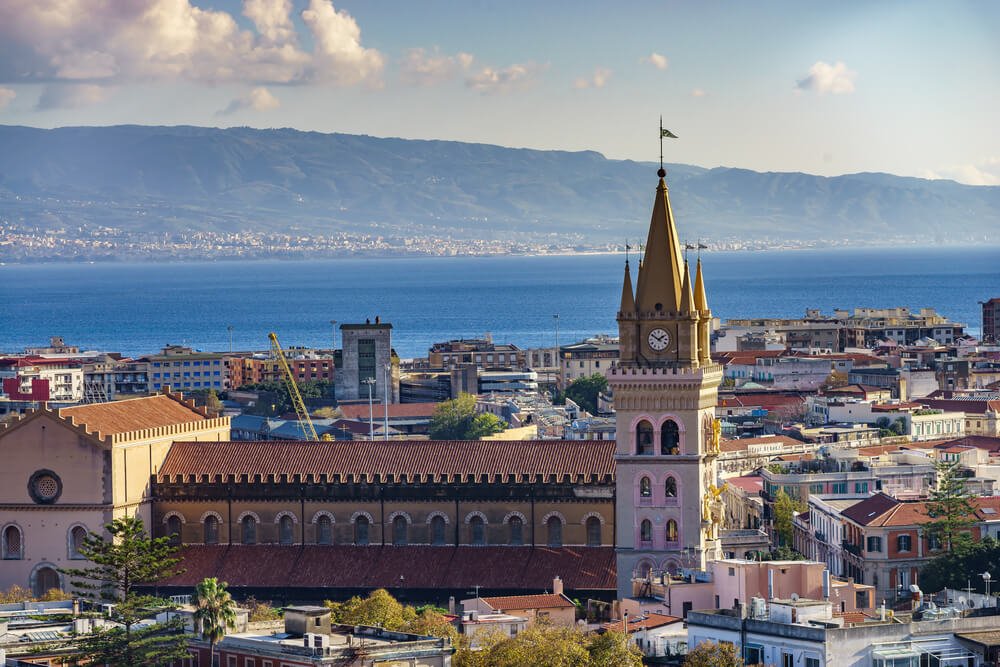
Just being one of the bigger cities in Sicily somehow isn’t enough to attract visitors.
With most travelers heading to Palermo, Agrigento, and Siracusa, Messina is mostly just visited by travelers who have already seen the rest of the island and are looking to avoid the crowds.
On the bright side, the fact that Messina isn’t so famous among tourists means you can often enjoy the city without having to put up with crowds.
While summers are still popular, especially given the many cruises stopping by, you’ll still find fewer people overall in Messina than in most other Sicilian cities and beach towns.
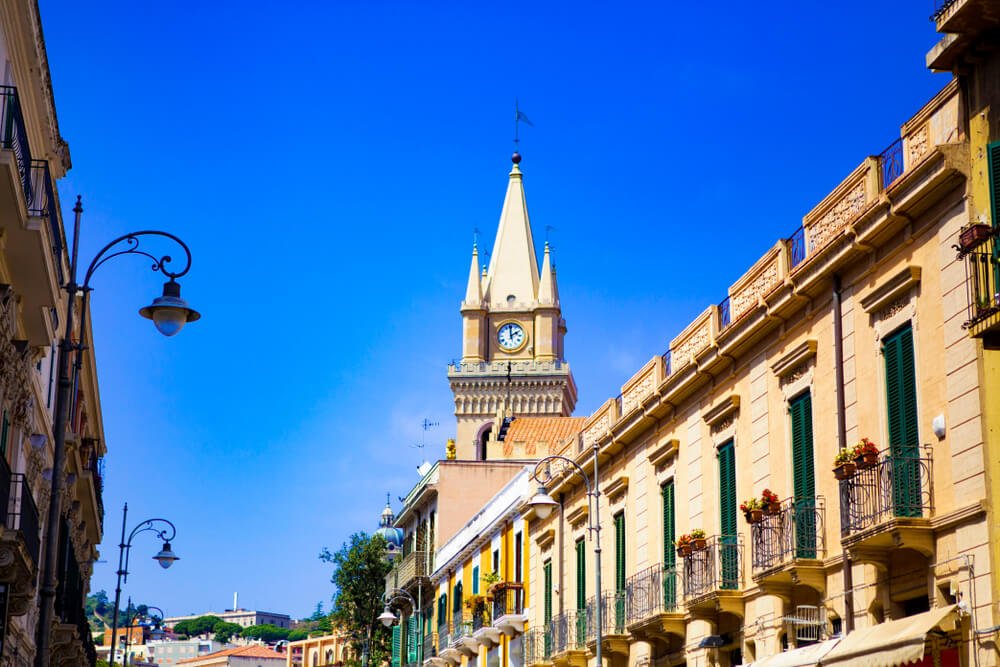
Given the island’s summer tourism boom, visiting in the shoulder season can be great; in particular, months like April and October offer the perfect compromise with good weather and moderate crowds.
Also, if you don’t mind passing up your Sicily beach time in exchange for solitude and winter prices, winter can also be a good time to visit, since Messina is not really a beach-centered destination.
Most people will find one day is enough time to explore Messina, so plan your schedule accordingly.
Especially if you’ll be taking a renting a car in Sicily before going on a road trip, I recommend spending the day in Messina before moving on to nearby places like the charming Taormina and beautiful Mount Etna and its wine-growing region.
Things to Do in Messina, Sicily
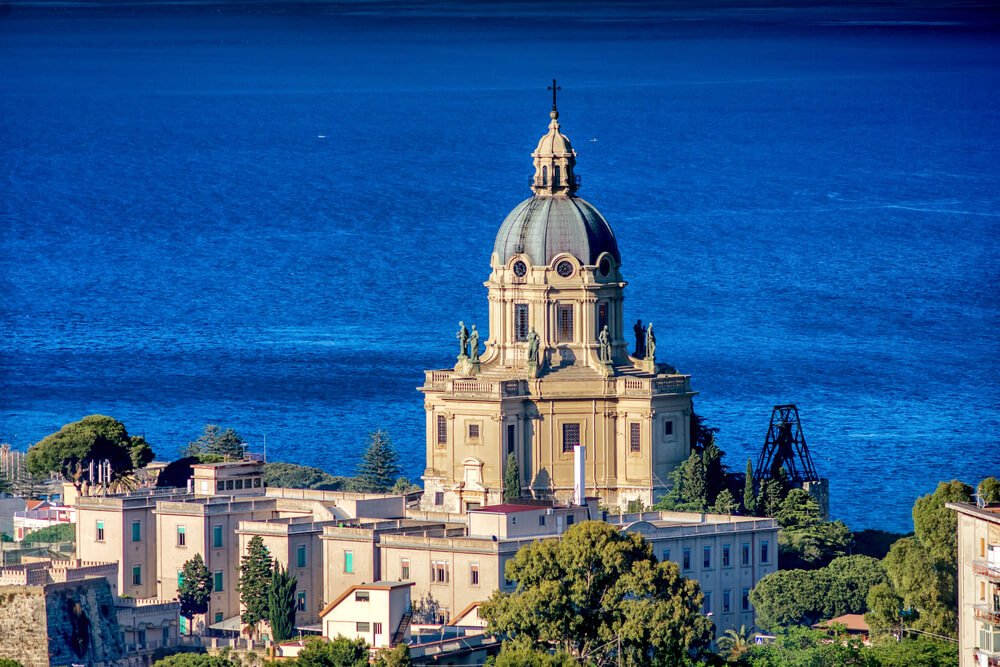
I’ll be honest: unlike some of the more popular cities in Sicily, Messina isn’t exactly packed with attractions and landmarks. However, this doesn’t mean there’s nothing to do!
You can take your sweet time walking around the city, all while admiring the beautiful churches, and checking out some stunning viewpoints.
Read on for a few more of my favorite things to do in Messina.
Explore the center of Messina.
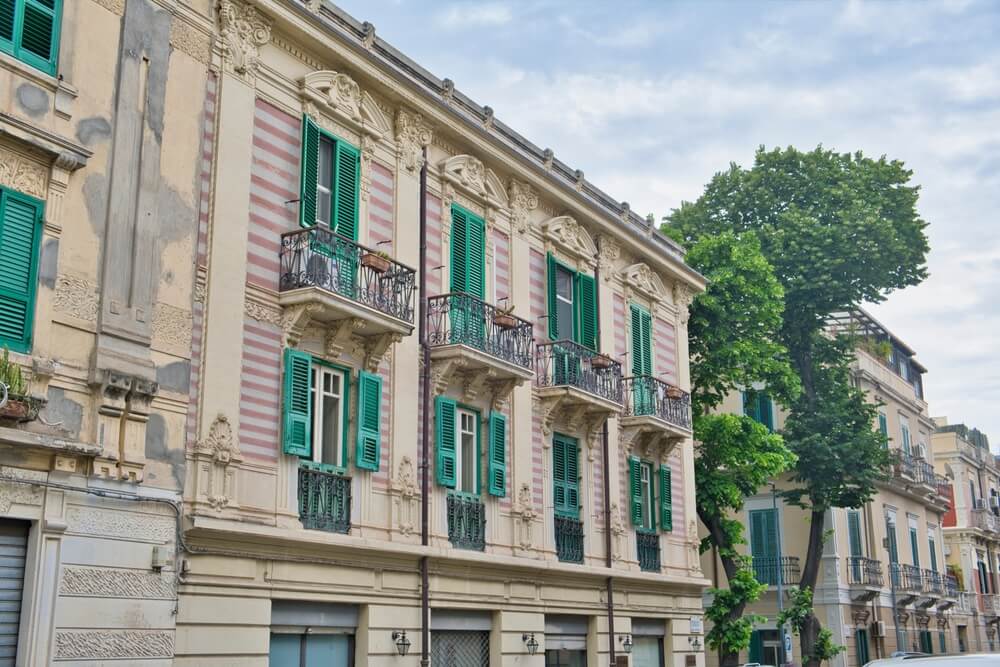
Start your visit to Messina off with a walk around its historical center, where you can admire beautiful buildings, check out impressive squares, and visit beautiful churches.
The city may be big, but the historical center is nice and compact, so you can explore it in a couple of hours.
Make your way down to stroll around Cairoli Square, one of the main city squares.
From the square, you can walk along Viale San Martino, Messina’s shopping street, lined with everything from clothing and jewelry stores to bars, bakeries, and gelateria
If you’re short on time but want to see the main sights and learn some cool facts about Messina, you can join this 2-hour Walking Tour.
Your knowledgeable guide will show you around the historical center and tell you legends and historical facts about the city’s landmarks for context.
Admire Messina’s fountains.

Scattered all over Messina’s historical center, you’ll see several artistic fountains which is one of the halmmarks of the city.
The most famous is Fontana di Nettuno (Fountain of Neptune), but others worth checking out include Fontana di Orione, in front of the cathedral in the Piazza del Duomo, and Fontana Falconieri.
Close to Fontana Falconieri, you can also check out a variety of sculptures lining a lovely stairway leading to Santuario Parrocchia S. Maria Di Montalto.
Tip: From here, you can enjoy a lovely view of the Cristo Re Sanctuary.
Discover Messina’s churches.
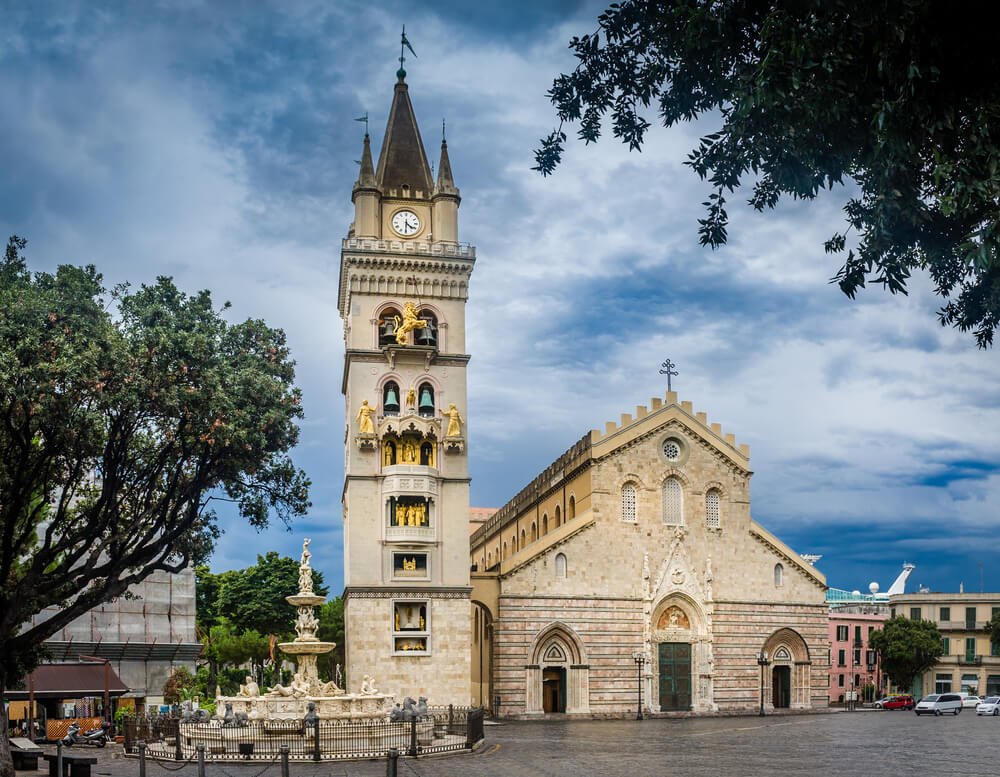
Messina’s churches are among its most beautiful landmarks, especially when set against the backdrop of the waters of the gorgeous Strait of Messina.
Along with the Messina Cathedral, the Tempio di Cristo Re (pictured nelow) and the Chiesa Santissima Annunziata dei Catalani are the most famous and photogenic churches in town.
The Basilica Cattedrale di Santa Maria Assunta is known for its astronomical clock (which we’ll talk about in a bit), but it’s also just a beautiful church worth visiting in its own right: its cupola is especially gorgeous!

Though mostly destroyed in the 1908 earthquake, some elements survived, like the Gothic portal and an apse.
You can get an audio guide for a small fee when visiting the cathedral interior.
Located on top of a hill, Tempio di Cristo Re offers spectacular views over the city and features unique architecture.
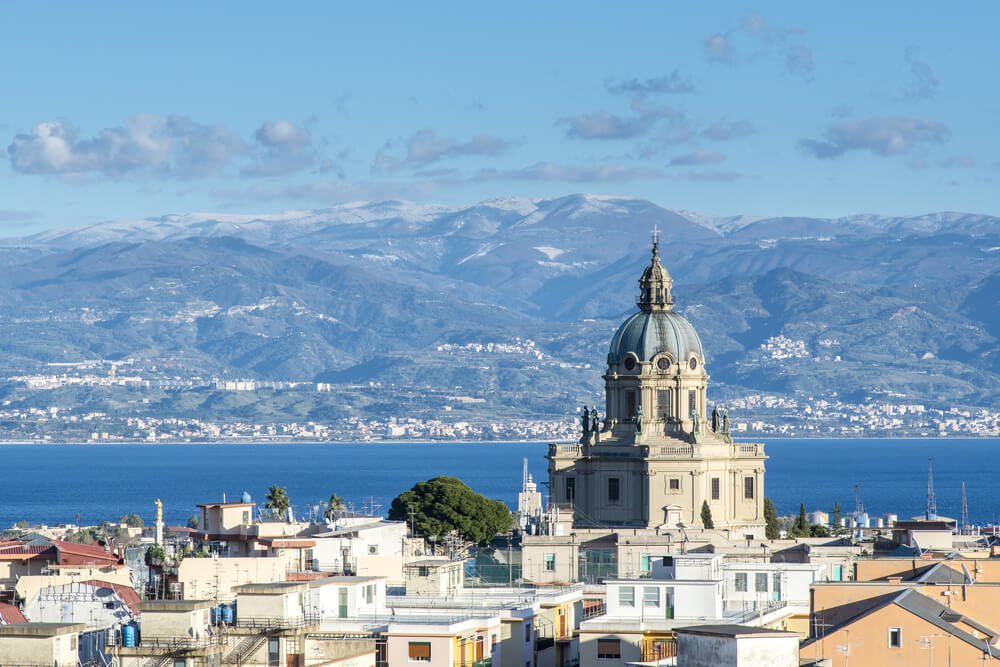
The church was built on the spot previously occupied by the medieval castle of Matagrifone and actually incorporates the ruins of the fortress, including the only tower still standing.
The last church we’ll talk about here, the lovely Chiesa Santissima Annunziata dei Catalani, dates to the Byzantine period and combines both Norman and Arab architectural elements in a blend that is typically Sicilian.
The 12th-century church occupies the place of an ancient temple dedicated to Neptune and is one of the few structures that survived the 1908 earthquake.
Watch the astronomical clock strike noon.
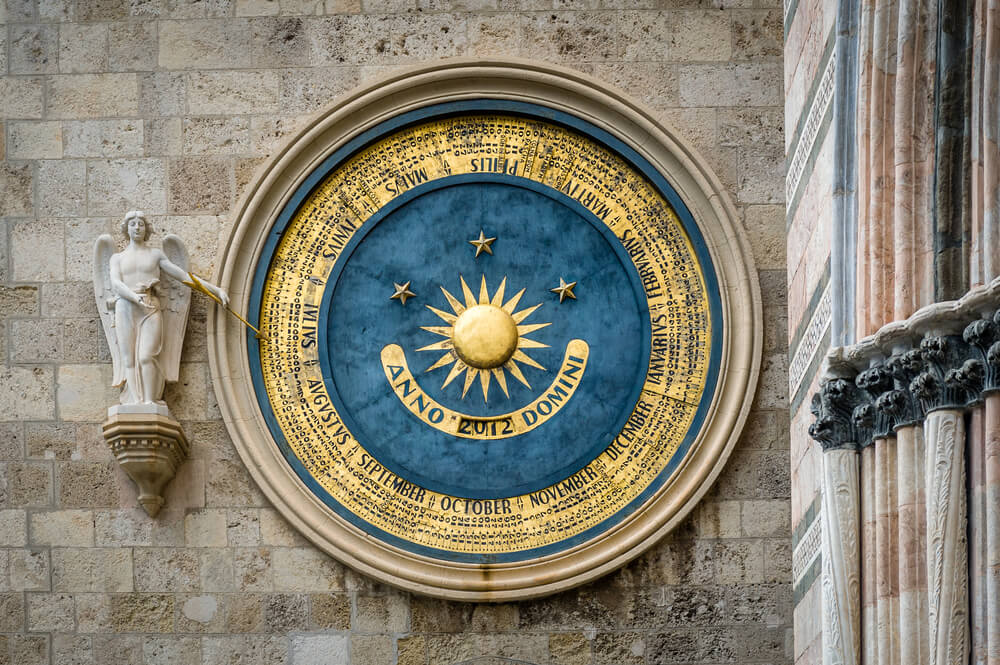
The Cathedral of Messina (aka the Duomo di Messina) is perhaps best known for its astronomical clock, the largest and purportedly most complex (though how that’s measured, I’m not exactly sure) in the world.
The clock was added to the bell tower in 1933 following the cathedral’s reconstruction after the 1908 earthquake.
Built by a Strasbourg-based company, the clock resembles the one in the French city from which it hails.
The clock has several symbolic decorations, the most significant one being the carousel of the days of the week, with a deity representing each day.
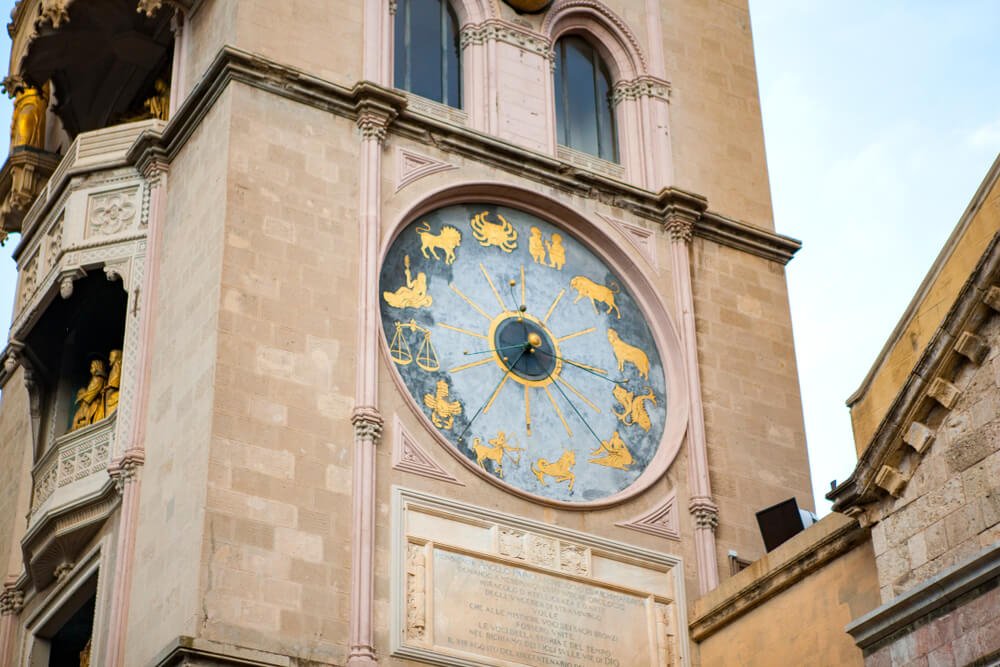
Other parts of the clock are a carousel depicting the stages of life, as well as a statue of Messina’s patron saint, a separate clock that marks the sun’s zodiac symbols, the Madonna of the Letter, and several biblical scenes.
Every day at noon, visitors gather around the clock to watch it come alive.
Watching the statues come to life one by one, complete with movement and sounds, is a must-see attraction in Messina.
Get there a few minutes earlier to catch a good spot for the show!
Check out the art at the Interdisciplinary Regional Museum of Messina.

The Regional Museum of Messina is home to a vast collection of artworks and archeological artifacts, including important works by Caravaggio and Antonello da Messina.
The museum highlights art and culture in Messina dating back between the 12th and 18th centuries.
In addition to its core focus, the museum also houses paintings, sculptures, and artifacts retrieved in the aftermath of the 1908 earthquake.
The museum has a unique location that is itself quite historical: it’s set in a former spinning mill.
Although it’s a bit farther than the other the main landmarks in Messina, you can still easily reach it by bus or a pleasant 30-minute walk.
Stroll through the University Botanical Garden.
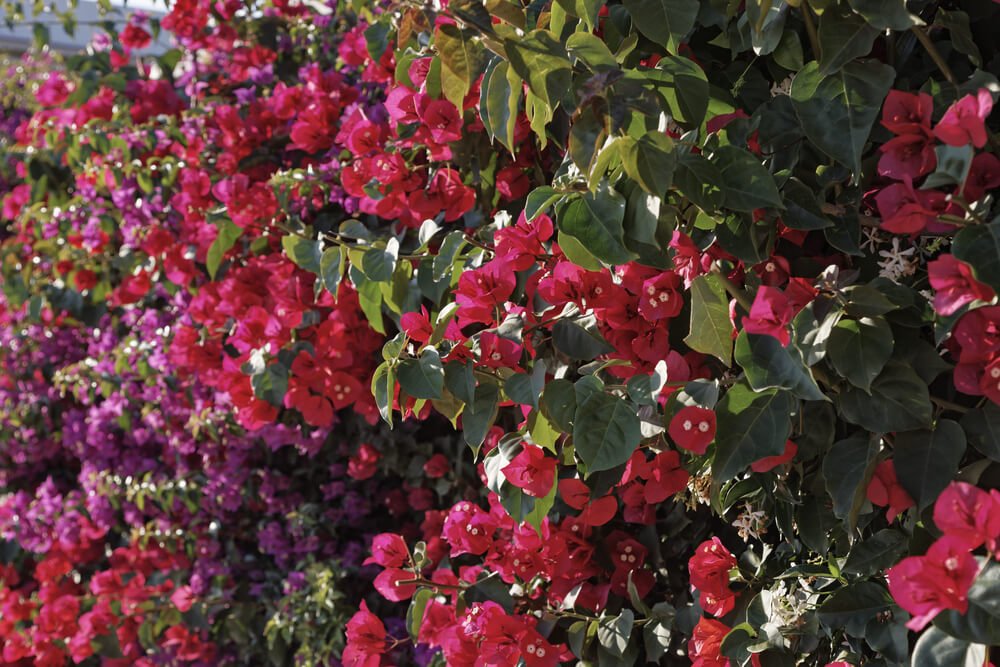
Admittedly, Messina is a bit lacking in green spaces for the most part, at least compared to other places in Sicily.
That said, the University Botanical Garden is a delightful exception!
This little green area was first established in the 17th century… but sadly, it was destroyed shortly after during Messina’s revolt against the Spanish.
The botanical garden as you’ll see it today dates to the late 19th century, a little oasis in the center of a busy city. Best of all, it’s free of charge!
However, it’s important to note that it’s only open on weekdays; weekends, it’s closed!
Enjoy the peaceful atmosphere of the Camposanto.
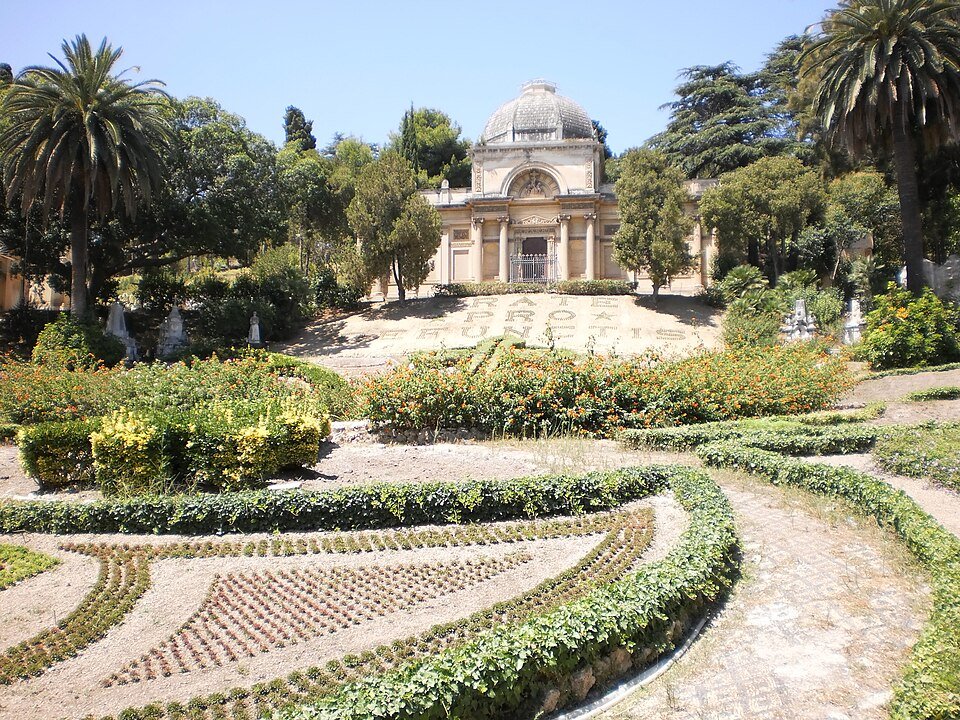
A graveyard walk might sound a bit unusual, but strolling through the Monumental Cemetery is one of the more popular things to do in Messina, and it’s also one of the city’s few green spaces.
Also known as Camposanto, the 18th-century cemetery features beautifully decorated chapels, sculptures, and monuments.
Going for a walk through Camposanto is a relaxing and peaceful way to spend an hour in Messina if you run out of things to do.
The cemetery is just a 20-minute walk from Piazza Cairoli, but you can also catch the tram.

Roxana is a Romanian-born freelance travel writer who has lived in Italy for over 15 years. She has a Master’s in Journalism and a Bachelor’s in Film Studies, and she studied at Università degli Studi di Roma Tre. Besides her native Romania, Roxana has lived in Rome, Lisbon, and Berlin, and she has traveled through much of Europe in search of hidden gems, history, and culture.